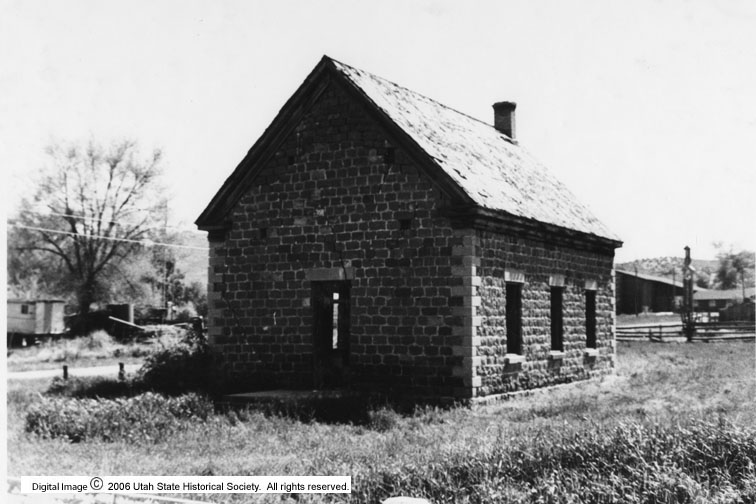Adapted from: Antrei, Albert C.T., and Roberts, Allen D. A History of Sanpete County. Utah State Historical Society, 1999; Bartholomew, Martha Winch. “Early History of Fayette, Utah.” http://www.abcfamilytree.com/J_Bartholomew/Fayette_Early_History.htm. Accessed May 1, 2020.

The location of Fayette was initially passed over by settlers from Springville on their way to Gunnison. The Melor and Bartholomew families came across a creek on their trip that ran with warm water, so they decided to call it Warm Creek. They continued on to Gunnison, deciding it was too crowded, and moved back to settle along Warm Creek, along with several other settlers, who built temporary shelters while they got their crops in.
The settlement, initially known as Warm Creek, went through several phases of settlement and abandonment. It was abandoned over concerns about safety and possible hostility from local Indians. The settlers paid one of the local Native American chiefs, Arrapene, several cattle for the right to settle in the area. In 1866 John E. Metcalf moved to Warm Creek under the direction of Brigham Young to establish a flour mill along the creek, as it never froze. He successfully established a mill that ran for thirty-one years, with burrs fashioned out of nearby granite boulders. Apostle George A. Smith encouraged the settlers to divide up the settlement as a town with room for additional families, and that the water would increase to meet the settlers’ needs. They did so, and found the water had indeed increased to meet their needs. Another apostle, Orson Hyde, recommended that the settlers change the name to Fayette, after the town in New York where the Church of Jesus Christ of Latter-day Saints had been established. The town was abandoned during the Black Hawk war in 1865, when the settlers moved to Gunnison for better protection. They returned to Fayette when the war ended in 1868.
The town suffered a reversal of water fortune in the 1910s, when Milliard County water operations to the north dammed the Sevier river for additional water. The reservoir ruined the farming land of many Fayette’s farmers, some of whom moved elsewhere. Agriculture production continued in Fayette, regardless. Over the years, farmers grew sugar beets, peas, hay, raised cattle, sheep, and poultry. In the 1990s, the tech industry came to the town, when Applied Composite Technologies, a manufacturer of prosthetic limbs came to Fayette. The town has remained small, with a population today around 260.
